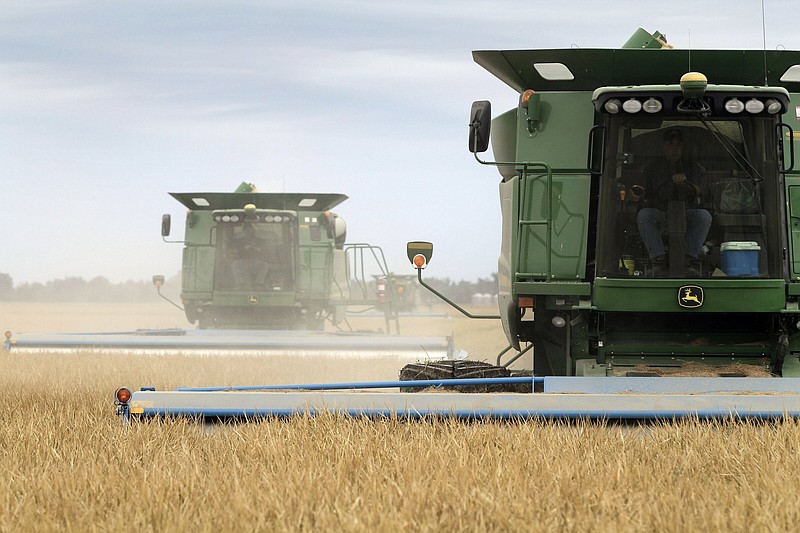The U.S. Department of Agriculture will soon give eligible rice farmers financial relief in a one-time payment that will be based on planted and prevented planted acres in 2022.
The USDA was given authority and funding of up to $250 million for the rice production program via the Consolidated Appropriations Act of 2023, the $1.7 trillion omnibus spending bill that passed in December.
Eligible Arkansas rice farmers will start receiving applications from the USDA's Farm Service Agency (FSA) beginning this week so they can apply for the one-time payments; once completed, farmers can return applications and any additional documents to their local FSA offices by July 10, according to an Arkansas Rice Federation news release Monday.
Initial payments will be issued at a reduced rate of 1 cent per pound, and a second round of payment could be offered to eligible farmers if there are any remaining funds; a prevented planted factor of 60% will be applied, if applicable, the release stated.
The USDA will make payments to rice farmers based on data that is already on file with the department, to include planted acres and acres that were prevented from being planted.
"[Prevented planting] is a crop insurance term and it's always tied to some kind of weather situation, whether it's a drought, flood or hurricane ... when weather prevents a grower from planting something, it becomes prevented planting," USA Rice spokesperson Michael Klein said.
"USDA wanted to include that in this rice assistance program because prevented planting is a result of things that are outside of the farmer's control, it's not a business decision."
Rice producers were hit by lower prices for rice, and in Arkansas, drought in the fall, as well as higher than normal farming input costs like fertilizer in 2022; some rice farmers have said their costs for inputs like fertilizer had gone up as much as 300%, Klein said.
In determining whether to provide this assistance to rice farmers, Congress referenced a Texas A&M University study that determined based on these factors, two-thirds of U.S. rice farms were going to be cash negative, or were going to lose money in 2022, Klein said, adding Sen. John Boozman and Rep. Rick Crawford, both Republicans from Arkansas' congressional delegation, championed this issue in Congress in December.
"Rice in general is a very expensive crop, more so than most other commodities and when the cost of production is already high and you're seeing all these spikes in prices for nitrogen, fertilizer, fuel and your price at market is being depressed, it's just kind of a perfect storm of bad luck," Klein said.
As to how much financial assistance Arkansas rice farmers could expect to see: "Arkansas is the top state for rice in terms of acres ... they're at about 48 or 49% of all rice acres in the U.S. in general, so you would expect them to see the lion's share of an assistance program like this," Klein said.
Arkansas rice producers harvested 1,084,000 acres of rice at a state average yield of 164.7 bushels per acre in 2022, according to the University of Arkansas Division of Agriculture Cooperative Extension Service's website.
Arkansas is the leading rice-producing state in the U.S. producing nearly 9 billion pounds of rice annually; Arkansas farmers produce approximately 50% of rice in the United States every year and Arkansas rice farmers and millers contribute more than $6 billion annually to the state's economy, employing more than 25,000 Arkansas residents, according to the Arkansas Rice Federation.
The Arkansas Rice Federation is associated with the USA Rice Federation.
